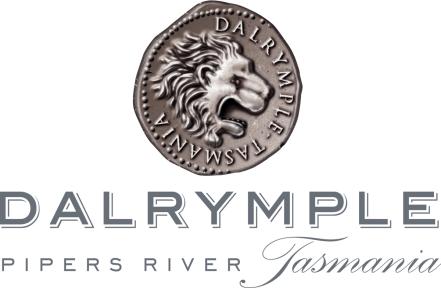Dalrymple Pinot Noir Tasmania
Dalrymple Pinot Noir Tasmania
Dalrymple Pinot Noir is a blend from our own vineyards at Pipers River and Coal River Valley and also our growers at Swansea and Ouse. Each of these sites are unique with distinctive individual terroirs. Combined, each of these parcels bring a complexity to the final wine blend.
Wine Production
Each of the different parcels of fruit from across the vineyard sites are picked on their merit and in consideration of the vintage weather conditions. The fruit is harvested into 500kg bins and received at the winery to be destemmed and tipped into small open top fermenters. Fermentation starts after 2-3 days and continues for 4-5 days with plunging of the cap 2-3 times per day to extract colour and tannin from skins. The wine is pressed at completion of fermentation and is settled in tank for 24 hours before being pumped into French oak barriques, of which about 1/3 is new. Malolactic fermentation takes place during barrel maturation and the wine is pumped out and blended early in the following year.
Tasting Notes
Generous red berry fruit aromas, hints of fresh cut plums and fine oak spice. The entry onto the palate of soft red fruits with ripe tannin structure support the sense of a warm vintage. Savoury notes of dried meats and provencal herbs add to the complexity after opening, and will become more integrated with bottle age
Food Pairing
Basque spiced lamb with piperade and garlic rice; creamy pasta with crispy leeks, mushrooms and asparagus.
Dalrymple Pinot Noir is a blend from our own vineyards at Pipers River and Coal River Valley and also our growers at Swansea and Ouse. Each of these sites are unique with distinctive individual terroirs. Combined, each of these parcels bring a complexity to the final wine blend.
Wine Production
Each of the different parcels of fruit from across the vineyard sites are picked on their merit and in consideration of the vintage weather conditions. The fruit is harvested into 500kg bins and received at the winery to be destemmed and tipped into small open top fermenters. Fermentation starts after 2-3 days and continues for 4-5 days with plunging of the cap 2-3 times per day to extract colour and tannin from skins. The wine is pressed at completion of fermentation and is settled in tank for 24 hours before being pumped into French oak barriques, of which about 1/3 is new. Malolactic fermentation takes place during barrel maturation and the wine is pumped out and blended early in the following year.
Tasting Notes
Generous red berry fruit aromas, hints of fresh cut plums and fine oak spice. The entry onto the palate of soft red fruits with ripe tannin structure support the sense of a warm vintage. Savoury notes of dried meats and provencal herbs add to the complexity after opening, and will become more integrated with bottle age
Food Pairing
Basque spiced lamb with piperade and garlic rice; creamy pasta with crispy leeks, mushrooms and asparagus.
Brand Materials
Vineyard & Production Info
Winemaking & Aging
Analytical Data
About the Vineyard
The 2016 was remarkable for the relatively calm, warm and dry conditions that started in early October and continued through to mid May, well after the early harvest was complete. There were periods of rain during this time of course, but these were infrequent and countered by the otherwise warm dry conditions. The mild spring produced an above average crop which was allowed to ripen fully through the very warm summer and autumn. Evidence of a warmer vintage is immediately apparent; with the generous red berry fruit aromas, hints of fresh cut plums and fine oak spice.



